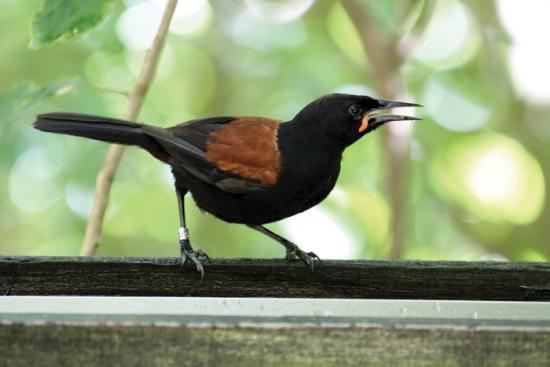Creating a New Type of Wildlife Reserve on Rotoroa Island
CBSG was invited to facilitate a planning workshop to develop a vision for Rotoroa Island's restoration that might challenge current ways of thinking about wildlife management.

The Situation
In New Zealand, introduced species—particularly mammals—have resulted in significant extinctions of native species. The creation of “pest-free” areas can be a key conservation strategy to help support native species recovery. Rotoroa Island is one of more than 20 islands in New Zealand’s Hauraki Gulf from which exotic pests have been removed. Management of the island is overseen by the Rotoroa Island Trust, which formed a partnership with Auckland Zoo in 2012 to create a wildlife reserve on the island. Even after the removal of mammalian predators, the island’s relatively small size (82 ha) and lack of mature forest would normally lead to the slow and limited return of only a few native species.
The Process
To explore alternatives to this, the Trust and Auckland Zoo invited CBSG to facilitate a planning workshop to develop a vision that might challenge current ways of thinking about wildlife management. Twenty workshop participants from five organizations gathered on Rotoroa Island in April 2013 to develop a five-year strategy to apply the wildlife management, education, and community engagement strengths of Auckland Zoo to the Trust’s restoration of Rotoroa Island. A framework for a long-term wildlife management plan for the island was developed, along with key issues statements and draft island management goals.
The Results
The resulting 25-year wildlife management plan for the island outlines actions required to sustain wildlife at a higher diversity and density than might be naturally present, and to manage the island to create a greater diversity of ecological attributes than previously found. The plan involves the introduction of 20 species of birds, reptiles, and invertebrates to the island over five years. The first of these occurred in April 2014, involving the translocation of 40 North Island saddlebacks (Philesturnus rufusater) and 40 whitehead (Mohoua albicilla). The island’s management is aimed at creating a new type of wildlife reserve: one where, by design, people take on a stewardship role in sustaining a rich and diverse assemblage of wildlife. Rotoroa Island will illustrate to visitors an active interventionist approach to ongoing wildlife management.
More
- Read the Workshop Report
- Read The Guardian's coverage of the Rotoroa Island project
- More CBSG Case Studies
Photos: Auckland Zoo


